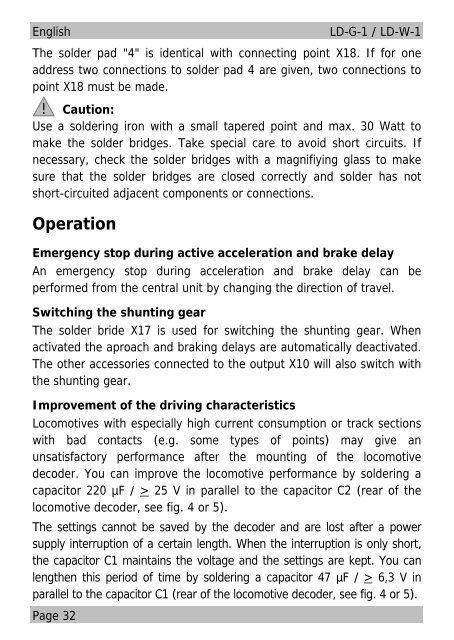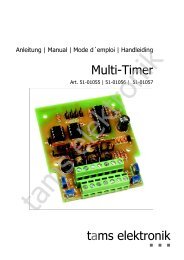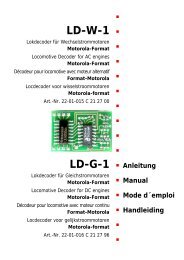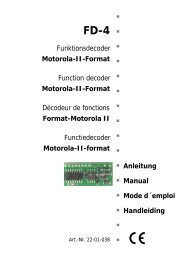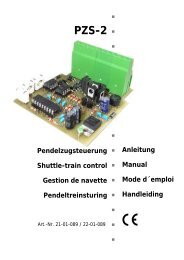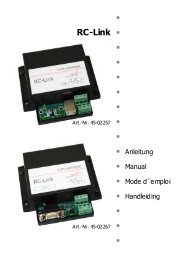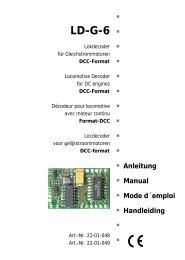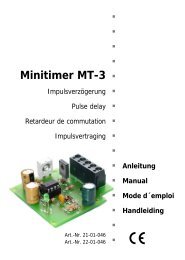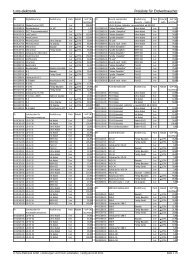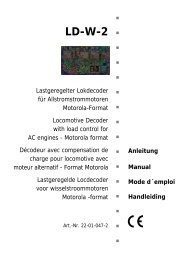LD-W-1 - Tams
LD-W-1 - Tams
LD-W-1 - Tams
You also want an ePaper? Increase the reach of your titles
YUMPU automatically turns print PDFs into web optimized ePapers that Google loves.
EnglishPage 32<strong>LD</strong>-G-1 / <strong>LD</strong>-W-1The solder pad "4" is identical with connecting point X18. If for oneaddress two connections to solder pad 4 are given, two connections topoint X18 must be made.! Caution:Use a soldering iron with a small tapered point and max. 30 Watt tomake the solder bridges. Take special care to avoid short circuits. Ifnecessary, check the solder bridges with a magnifiying glass to makesure that the solder bridges are closed correctly and solder has notshort-circuited adjacent components or connections.OperationEmergency stop during active acceleration and brake delayAn emergency stop during acceleration and brake delay can beperformed from the central unit by changing the direction of travel.Switching the shunting gearThe solder bride X17 is used for switching the shunting gear. Whenactivated the aproach and braking delays are automatically deactivated.The other accessories connected to the output X10 will also switch withthe shunting gear.Improvement of the driving characteristicsLocomotives with especially high current consumption or track sectionswith bad contacts (e.g. some types of points) may give anunsatisfactory performance after the mounting of the locomotivedecoder. You can improve the locomotive performance by soldering acapacitor 220 µF / > 25 V in parallel to the capacitor C2 (rear of thelocomotive decoder, see fig. 4 or 5).The settings cannot be saved by the decoder and are lost after a powersupply interruption of a certain length. When the interruption is only short,the capacitor C1 maintains the voltage and the settings are kept. You canlengthen this period of time by soldering a capacitor 47 µF / > 6,3 V inparallel to the capacitor C1 (rear of the locomotive decoder, see fig. 4 or 5).


